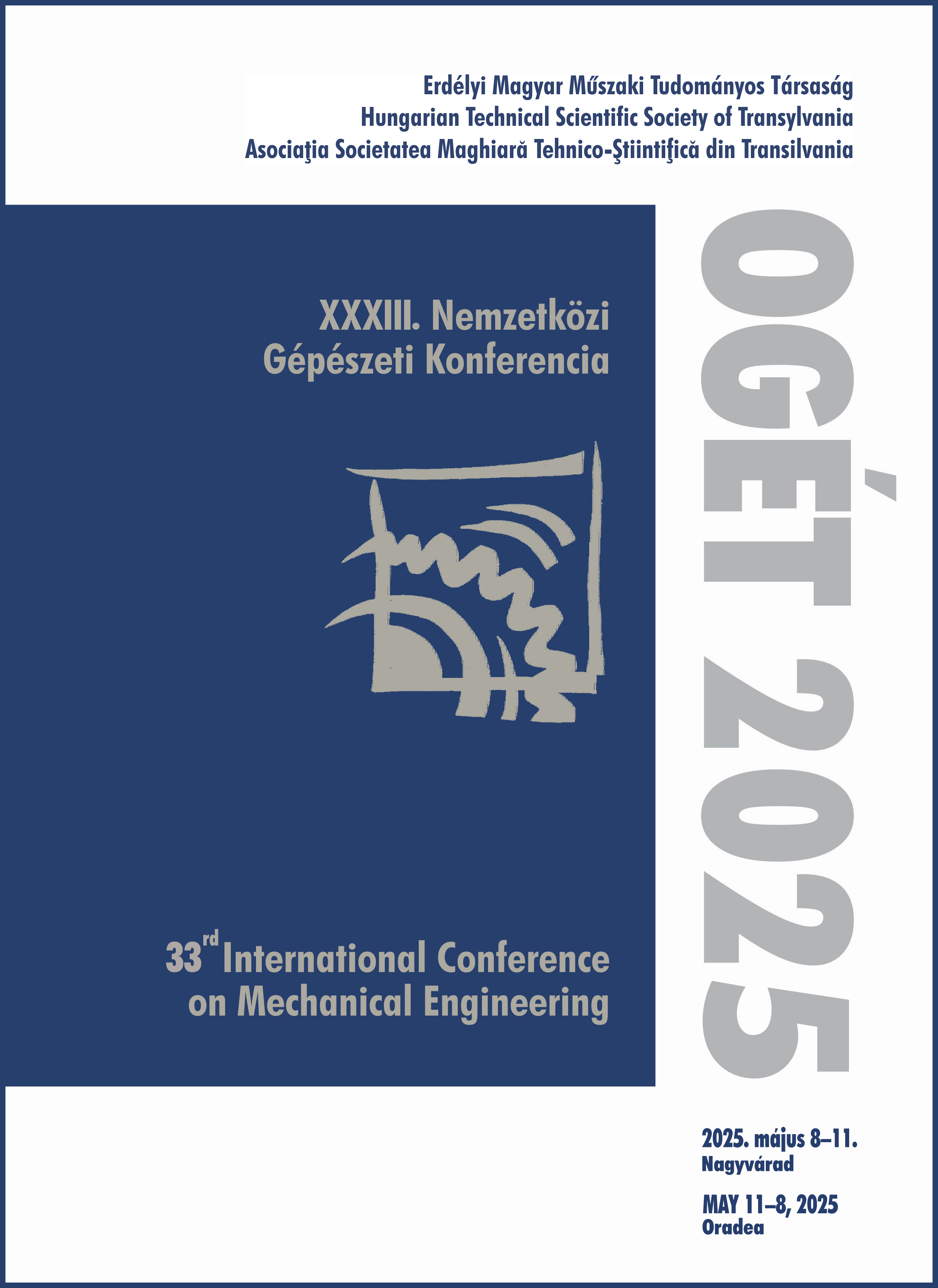Repceszalma őrleménnyel társított biopolimer keverékek mechanikai tulajdonságainak vizsgálata
Mechanical properties of rapeseed straw-filled biopolymer blends
Keywords:
biopolymer, biocomposite, sustainability, natural fiber, mechanical properties, /, biopolimer, biokompozit, fenntarthatóság, természetes szál, mechanikai tulajdonságokAbstract
In this research, poly(lactic acid)/polybutylene adipate-co-terephthalate blends were paired with a third component, rapeseed straw, in order to study its potential strengthening effect. The rapeseed straw and the two polymers were mixed at different weight ratios to prepare biopolymer-based composites. The fabricated biocomposite specimens were subjected to different mechanical test (tensile, flexural, impact) in order to investigate their resistance against different types of loads.
Kivonat
Jelen kutatásban politejsav/polibutilén-adipát-ko-tereftalát keverékhez egy harmadik komponens, repceszalma őrlemény került adalékolásra annak lehetséges erősítőhatásának megvizsgálása céljából. A repceszalmát és a két biopolimert különböző arányban társítva biokompozitok lettek létrehozva. Az előállított próbatesteken mechanikai vizsgálatok (szakítóvizsgálat, hajlítóvizsgálat, ütvehajlító vizsgálat) lettek elvégezve a kompozitok különböző igénybevételekkel szembeni ellenálló képességének feltérképezése céljából
References
Pokharel, A., Falua, K. J., Babaei-Ghazvini, A., & Acharya, B. Biobased polymer composites: A review. Journal of Composites Science, MDPI, 2022, 6(9), 255.
Lackner, M. Bioplastics—biobased plastics as renewable and/or biodegradable alternatives to petroplastics. In K. Othmer (Ed.), Kirk-Othmer Encyclopedia of Chemical Technology (6th ed.). John Wiley & Sons, 2015.
Kaur, R., Pathak, L., & Vyas, P. Biobased polymers of plant and microbial origin and their applications - A review. Biotechnology for Sustainable Materials, Springer, 2024, 1(1), 13.
Patel, N., Feofilovs, M., & Blumberga, D. Agro biopolymer: A sustainable future of agriculture—state of art review. Environmental and Climate Technologies, Riga Technical University, 2022, 26(1), 499-511.
Jha, S., Akula, B., Enyioma, H., Novak, M., Amin, V., & Liang, H. Biodegradable biobased polymers: A review of the state of the art, challenges, and future directions. Polymers, MDPI, 2024, 16(16), 2262.
Mahata, D., Karthikeyan, S., Godse, R., Gupta, V. Poly(butylene adipate-co-terephthalate) polyester synthesis process and product development. Polymer Science, Series C, Springer, 2021, 63, 102–111.
Zhou, X.-W., Huang, J., Zhang, X.-H., Li, T., Wang, Y., Wang, S.-B., Xia, B.-H., & Dong, W.-F. Design of tough, yet strong, heat-resistant PLA/PBAT blends with reconfigurable shape memory behavior by engineering exchangeable covalent crosslinks. Chinese Journal of Polymer Science, Springer, 2023, 41(12), 1868-1878.
Li, P., Jiang, Y., Chen, J., Min, J., Fu, Q., & Zhang, J. Preparation of high-performance PLA/PBAT blends with hierarchical structure by controlling distribution of oriented region. Journal of Polymer Research, Springer, 2023, 30(3), 128.
Wang, X., Peng, S., Chen, H., Yu, X., & Zhao, X. Mechanical properties, rheological behaviors, and phase morphologies of high-toughness PLA/PBAT blends by in-situ reactive compatibilization. Composites Part B: Engineering, Elsevier, 2019, 173, 107028.
Thapliyal, D., Verma, S., Sen, P., Kumar, R., Thakur, A., Tiwari, A. K., Singh, D., Verros, G. D., Arya, R. K. Natural fibers composites: Origin, importance, consumption pattern, and challenges. Journal of Composites Science, MDPI, 2023, 7(12), 506.
Duflou, J.R., Van Acker, K. Dewulf W. Do fiber-reinforced polymer composites provide environmentally benign alternatives? A life-cycle-assessment-based study. MRS Bulletin, Springer, 2012, 37, 374–382.
Mohite, A. S., Jagtap, A. R., Avhad, M. S., More, A. P. Recycling of major agriculture crop residues and its application in polymer industry: A review in the context of waste to energy nexus. Energy Nexus, Elsevier, 2022, 7, 100134.
Andrzejewski, J., Grad, K., Wiśniewski, W., & Szulc, J. The use of agricultural waste in the modification of poly(lactic acid)-based composites intended for 3D printing applications. The use of toughened blend systems to improve mechanical properties. Journal of Composites Science, MDPI, 2021, 5(10), 253.
Feng, J., Zhang, W., Wang, L., and He, C. Performance comparison of four kinds of straw/PLA/PBAT wood plastic composites. BioResources, North Carolina University, 2020, 15(2), 2596-2604.
Sudha G. S., Aswathy N. R., Biswal M. Ch., Mohapatra A. K. Investigating the reinforcing effect of jute fiber in a PLA & PBAT biopolymer blend matrix for advanced engineering applications: Enhancing sustainability with bioresources. Materials Today Communications, Elsevier, 2024, 40, 109960.
Ramachandran, A., Mavinkere Rangappa, S., Kushvaha, V., Khan, A., Seingchin, S., Dhakal, H. N. Modification of fibers and matrices in natural fiber reinforced polymer composites: A comprehensive review. Macromolecular Rapid Communications, Wiley, 2022, 43(17), 2100862
Chaiwutthinan, P., Chuayjuljit, S., Srasomsub, S., Boonmahitthisud, A. Composites of poly(lactic acid)/poly(butylene adipate-co-terephthalate) blend with wood fiber and wollastonite: Physical properties, morphology, and biodegradability. Journal of Applied Polymer Science, 2019, Wiley, 136(21), 47543
Oliver-Ortega H., Tarrés Q., Mutjé P., Delgado-Aguilar M., Méndez J. A., Espinach F. X. Impact Strength and Water Uptake Behavior of Bleached Kraft Softwood-Reinforced PLA Composites as Alternative to PP-Based Materials. Polymers, MDPI, 2020, 12(9), 2144.


